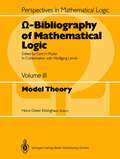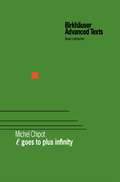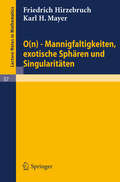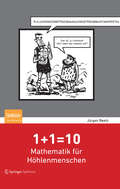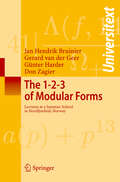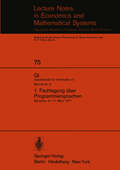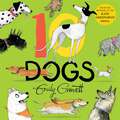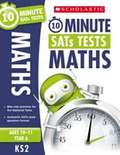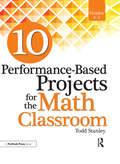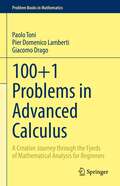- Table View
- List View
الرسالة المستطرقة فى علوم الحديث
by محمد بن جعفر الكتانيوقد قال (ابن حجر) في أول (مقدمة فتح الباري) ما نصه: اعلم أن آثار النبي ـ صلى الله عليه وسلم ـ لم تكن في عصر الصحابة وكبار التابعين مدونة في الجوامع، ولا مرتبه، لأمرين: أحدهما: أنهم كانوا في ابتداء الحال قد نهوا عن ذلك، كما ثبت في (صحيح مسلم)، خشية أن يختلط بعض ذلك بالقرآن العظيم. وثانيهما: لسعة حفظهم، وسيلان أذهانهم، ولأن أكثرهم كانوا لا يعرفون الكتابة. ثم حدث في أواخر عصر التابعين تدوين الآثار، وتبويب الأخبار، لمّا انتشر العلماء في الأمصار، وكثر الابتداع من الخوارج والروافض ومنكري الأقدار، واتسع الخرق على الراقع، وكاد أن يلتبس الباطل بالحق. فأول من جمع في ذلك (الربيع بن صبيح) (وسعيد ابن أبي عروبة) وغيرهما. دونت أحكام الحديث في منتصف القرن الثاني وكانوا يصنفون كل باب على حده، إلى أن قام كبار أهل الطبقة الثانية في منتصف القرن (ص 6) الثاني، فدونوا الأحكام. فصنف (الإمام مالك) (الموطأ) بالمدينة، وتوخى فيه القوي من حديث أهل الحجاز، ومزجه بأقوال الصحابة، وفتاوى التابعين، ومن بعدهم. أول من صنف الحديث بمكة ابن جريج وصنف (أبو محمد عبد الملك بن عبد العزيز بن جريج) بمكة، (وأبو عمرو عبد الرحمن بن عمرو الأوزاعي) بالشام، (وأبو عبد الله سفيان بن سعيد الثوري) بالكوفة، (وأبو سلمة حماد بن سلمة بن دينار) بالبصرة. ثم تلاهم كثير من أهل عصرهم في النسج على منوالهم، إلى أن رأى بعض الأئمة منهم، أن يفرد حديث النبي ـ صلى الله عليه وسلم ـ خاصة، وذلك على رأس المائتين. فصنف (عبيد الله بن موسى العبسي الكوفي) مسندا، وصنف (مسدد بن مسرهد البصري) مسندا، وصنف (أسد بن موسى الأموي) مسندا، وصنف (نُعيم بن حماد الخزاعي) نزيل مصر مسندا، ثم اقتفى الأئمة بعد ذلك أثرهم، فقلَّ إمام من الحفاظ إلا وصنف حديثه على المسانيد، (كالإمام أحمد بن حنبل) (و إسحاق بن راهويه) (وعثمان بن أبي شيبة) وغيرهم من النبلاء. ومنهم من صنف على الأبواب والمسانيد معا (كأبي بكر بن أبي شيبة) اهـ. وعبارته في (إرشاد الساري) قال: منهم من رتب على المسانيد (كالإمام أحمد بن حنبل) (و إسحاق بن راهويه) (وأبي بكر ابن أبي شيبة) (وأحمد بن منيع) (وأبي خيثمة) (والحسن بن سفيان) (وأبي بكر البزار) وغيرهم. ومنهم من رتب على العلل: بأن يجمع في كل متن طرقه، واختلاف الرواة فيه، بحيث يتضح إرسال ما يكون متصلا، أو وقف ما يكون مرفوعا، أو غير ذلك. ومنهم من رتب على الأبواب الفقهية، وغيرها، ونوّعه أنواعا، وجمع ما ورد في كل نوع، وفي كل حكم إثباتا ونفيا، في باب فباب، بحيث يتميز ما يدخل في الصوم مثلا عما يتعلق بالصلاة. وأهل هذه الطريقة منهم من تقيد بالصحيح (كالشيخين) وغيرهما، ومنهم من لم يتقيد بذلك كباقي الكتب الستة، وكان أول من صنف في الصحيح (محمد بن إسماعيل البخاري). ومنهم المقتصر على (ص 7) الأحاديث المتضمنة للترغيب والترهيب، ومنهم من حذف الإسناد واقتصر على المتن فقط، (كالبغوي) في (مصابيحه) (واللؤلؤي) في (مشكاته) اهـ.
الأخلاق والسير في مداواة النفوس
by أبي محمد علي بن حزم الأندلسي الظاهريقد جمعت في كتابي هذا معان كثيرة أفادنيها واهب التمييز تعالى بمرور الأيام وتعاقب الأحوال بما منحني عز وجل من التهمم بتصاريف الزمان والإشراف على أحواله حتى أنفقت في ذلك أكثر عمري وآثرت تقييد ذلك بالمطالعة له والفكرة فيه على جميع اللذات التي تميل إليها أكثر النفوس وعلى الازدياد من فضول المال ورقمت كل ما سبرت من ذلك بهذا الكتاب لينفع الله تعالى به من شاء من عباده ممن يصل إليه ما أتعبت فيه نفسي واجهدتها فيه واطلت فيه فكري فيأخذه عفوا وأهديته إليه هنيئا فيكون ذلك أفضل له من كنوز المال وعقد الأملاك إذا تدبره ويسره الله تعلي لاستعماله. وانا راج في ذلك من الله تعالي أعظم الأجر لنيتي في نفع عباده وإصلاح ما فسد من أخلاقهم ومداواة علل نفوسهم وبالله تعالى استعين وحسبنا الله ونعم الوكيل
الفصل في الملل و الآهواء و النحل
by ابن حزمإن كثيراً من الناس كتبوا في افتراق الناس في دياناتهم ومقالاتهم كتباً كثيرة جداً فبعض أطال وأسهب وأكثر وهجر واستعمل الأغاليط والشغب فكان ذلك شاغلاً عن الفهم قاطعاً دون العلم وبعض حذف وقصر وقلل واختصر واضرب عن كثير من قوي معارضات أصحاب المقالات فكان في ذلك غير منصف لنفسه في أن يرضى لها بالغبن في الإبانة وظالماً لخصمه في أن لم يوفه حق اعتراضه وباخساً حق من قرأ كتابه إذ لم يغنه عن غيره وكلهم إلا تحلة القسم عقد كلامه تعقيداً يتعذر فهمه على كثير من أهل الفهم وحلق على المعاني من بعد حتى صار ينسي آخر كلامه أوله وأكثر هذا منهم ستائر دون فساد معانيهم فكان هذا منهم غير محمود في عاجله وآجله.
Ω-Bibliography of Mathematical Logic: Model Theory (Perspectives in Mathematical Logic)
by Gert H. Müller Wolfgang Lenskiℓ Goes to Plus Infinity (Birkhäuser Advanced Texts Basler Lehrbücher)
by Michel ChipotThis book provides proofs of the asymptotic behavior of solutions to various important cases of linear and nonlinear problems in the theory of elliptic and parabolic partial differential equations. It is a valuable resource for graduates and researchers in applied mathematics and for engineers. Many results presented here have not been published elsewhere. They will motivate and enable the reader to apply the theory to other problems in partial differential equations.
0-10 grid (tactile)
by Adrian FarnsworthThis page shows a grid numbered from 0 to 10 in units of one on the X and Y-axis.
0-100 number cards (tactile)
by Adrian FarnsworthThese seven pages show numbers from 0 to 100 in large print and braille on a grid, each divided by vertical and horizontal lines so they can be cut up to make individual cards with one number on each.
0 to 100 Rule (Large Print)
by Adrian FarnsworthThis page shows a rule numbered from 0 to 100 in tens. There is a duplicate of it in the bottom half of the page.
0 to 100 rule (tactile)
by Adrian FarnsworthThis page shows a rule numbered from 0 to 100 in tens. There is a duplicate of it in the bottom half of the page.
1+1=10: Mathematik für Höhlenmenschen
by Jürgen BeetzMehr als die einfache Logik eines Frühmenschen brauchen Sie nicht, um die Grundzüge der Mathematik zu verstehen. Denn Sie treffen in diesem Buch viele einfache, fast gefühlsmäßig zu erfassende mathematische Prinzipien des täglichen Lebens. Deswegen kann der Autor bei seinem Versuch, die Mathematik „begreiflich“ zu machen, in die Steinzeit zurückgehen – genauer gesagt: etwa in die Jungsteinzeit, 10.000 Jahre vor unserer Zeitrechnung. Ackerbau und Viehzucht hatten schon begonnen. Dort treffen Sie Eddi Einstein, den Denker und Rudi Radlos, den Erfinder – die Hauptakteure. Ein dritter Geselle ist Siggi Spökenkieker, der Druide und Seher. Siggi ist mit der Gabe der Präkognition gesegnet. So können wir Eddi, den Denker, mit Erkenntnissen ausstatten, die erst Jahrtausende später von bedeutenden Philosophen und Mathematikern erlangt worden waren. Die wahre Meisterin dieser Wissenschaftsdisziplin ist jedoch Wilhelmine Wicca. Sie war so klug wie die drei Kerle zusammen. Deshalb galt sie auch als Hexe – was damals ein Ehrentitel war – und als weise Frau.
The 1-2-3 of Modular Forms: Lectures at a Summer School in Nordfjordeid, Norway (Universitext)
by Jan Hendrik Bruinier Gerard van der Geer Günter Harder Don ZagierThis book grew out of three series of lectures given at the summer school on "Modular Forms and their Applications" at the Sophus Lie Conference Center in Nordfjordeid in June 2004. The first series treats the classical one-variable theory of elliptic modular forms. The second series presents the theory of Hilbert modular forms in two variables and Hilbert modular surfaces. The third series gives an introduction to Siegel modular forms and discusses a conjecture by Harder. It also contains Harder's original manuscript with the conjecture. Each part treats a number of beautiful applications.
1-50 number cards (tactile)
by Adrian FarnsworthThese seven pages show numbers from1 to 50 in large print and braille on a grid, each divided by vertical and horizontal lines so they can be cut up to make individual cards with one number on each.
1. Fachtagung über Programmiersprachen: München, 9.–11. März 1971 (Lecture Notes in Economics and Mathematical Systems #75)
by Hans Langmaack Manfred Paul1 to 100 number square (tactile)
by Adrian FarnsworthThe Large Print page shows two squares each containing smaller squares numbered 1 to 100 in large print. The Braille pagenbsp;shows a square containing smaller squares numbered 1 to 100 in braille.
1 to 2 scale (large print)
by Adrian FarnsworthThis page shows a scale marked every tenth and labelled in giant print at the 0, 1 and 2 points
10 Dogs
by Emily GravettTen gorgeous dogs chase, hide and play with ten juicy sausages in this funny, original book about numbers by the multi-award-winning, bestselling Emily Gravett.Bursting with energy and fun, young children will love to count the dogs and the sausages, as well as looking out for all the funny details on each page. The book explores numbers one going up to ten, and ten going down to zero, touching on several simple concepts like half, all, more, less along the way.A brilliant companion to Emily's book about counting, colours and cats, 10 Cats.
10 Minute Sats Tests: Maths - Ages 10-11 Year 6 (PDF)
by Tim HandleyJust like the real thing - only shorter!<br> <br> Help your child prepare for the SATS with these bite-sized National test papers. This book offers 12 mini-tests - including Reasoning and Arithmetic papers. Question types and mark schemes match the format of the National tests and offer an authentic SATs experience, though the flexible format allows them to be used at any time of the day. <br> A handy progress chart is also supplied to give you some indication of the scores your child is likely to attain. A skills check section will also help you to identify all of the key maths skills your child needs to be successful in the SATs tests.
10 Performance-Based Projects for the Math Classroom: Grades 3-5
by Todd StanleyEach book in the 10 Performance-Based Projects series provides 10 ready-made projects designed to help students achieve higher levels of thinking and develop 21st-century skills. Projects are aligned to the Common Core State Standards, allowing students to explore and be creative as well as gain enduring understanding. Each project represents a type of performance assessment, including portfolios, oral presentations, research papers, and exhibitions. Included for each project is a suggested calendar to allow teacher scheduling, mini-lessons that allow students to build capacity and gain understanding, as well as multiple rubrics to objectively assess student performance. The lessons are presented in an easy-to-follow format, enabling teachers to implement projects immediately.Grades 3-5
10 Performance-Based Projects for the Math Classroom: Grades 3-5
by Todd StanleyEach book in the 10 Performance-Based Projects series provides 10 ready-made projects designed to help students achieve higher levels of thinking and develop 21st-century skills. Projects are aligned to the Common Core State Standards, allowing students to explore and be creative as well as gain enduring understanding. Each project represents a type of performance assessment, including portfolios, oral presentations, research papers, and exhibitions. Included for each project is a suggested calendar to allow teacher scheduling, mini-lessons that allow students to build capacity and gain understanding, as well as multiple rubrics to objectively assess student performance. The lessons are presented in an easy-to-follow format, enabling teachers to implement projects immediately.Grades 3-5
10 x 10 blank grid (tactile)
by Adrian FarnsworthThese pages each show an image of a grid with tick marks to the left and bottom. The first page has a grid of thick black lines, the second page has a grid of thick grey lines, the third a grid of thin grey lines, the fourth a grid of spaced black dotted lines, the fifth a grid of black dotted lines, the sixth a grid of fine dotted lines, the seventh a grid of grey dotted lines, the eighth a grid of black dots, the ninth a grid of grey dots, and the last a grid of small black dots.
10 x 10 graph (large print)
by Adrian FarnsworthThis page shows a blank graph with a grid and the Y and X-axis labelled to the left and bottom.
10 x 10 graph (tactile)
by Adrian FarnsworthThis page shows a blank graph with a grid and the Y and X-axis labelled to the left and bottom.
100+1 Problems in Advanced Calculus: A Creative Journey through the Fjords of Mathematical Analysis for Beginners (Problem Books in Mathematics)
by Paolo Toni Pier Domenico Lamberti Giacomo DragoThis book convenes a collection of carefully selected problems in mathematical analysis, crafted to achieve maximum synergy between analytic geometry and algebra and favoring mathematical creativity in contrast to mere repetitive techniques. With eight chapters, this work guides the student through the basic principles of the subject, with a level of complexity that requires good use of imagination.In this work, all the fundamental concepts seen in a first-year Calculus course are covered. Problems touch on topics like inequalities, elementary point-set topology, limits of real-valued functions, differentiation, classical theorems of differential calculus (Rolle, Lagrange, Cauchy, and l’Hospital), graphs of functions, and Riemann integrals and antiderivatives. Every chapter starts with a theoretical background, in which relevant definitions and theorems are provided; then, related problems are presented. Formalism is kept at a minimum, and solutions can be found at the end of each chapter.Instructors and students of Mathematical Analysis, Calculus and Advanced Calculus aimed at first-year undergraduates in Mathematics, Physics and Engineering courses can greatly benefit from this book, which can also serve as a rich supplement to any traditional textbook on these subjects as well.

